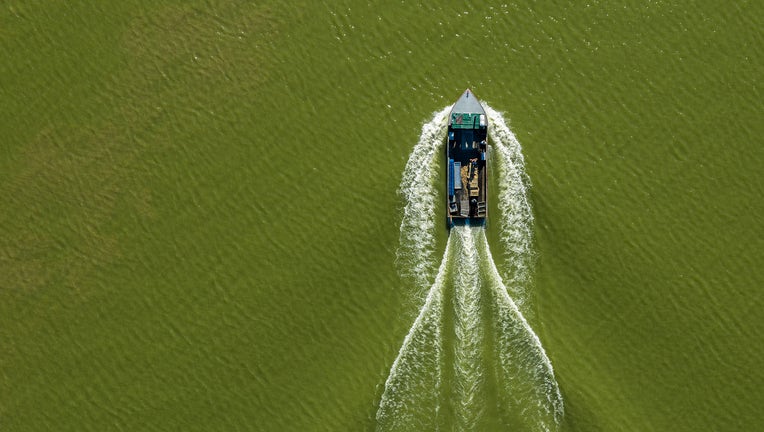EPA-approved plan to reduce Lake Erie algal blooms met with pushback

A boat of commercial fisherman Drew Koch, returns home on Sandusky Bay after fishing in Lake Erie on Sept. 27, 2019. The warm, shallow waters of Lake Erie act as an incubator for algae and toxin-producing, which gives the lake its trademark green tin
(FOX 2) - A plan to reduce the amount of nutrients from leaching into Lake Erie, the main cause behind severe algal blooms that can taint drinking water and lead to fish-kills has been approved by the U.S. EPA.
The strategy seeks to cut down on the phosphorous flowing from the Maumee River in Ohio into the lake. The fertilizer often flows into the river as run-off from farms located along the major river, eventually reaching the lake and leading to an explosion of algae growth.
Sometimes the blooms are so severe they're visible from space.
The plan calls for establishing a total maximum daily load of phosphorous for the Maumee River Watershed.
"Ohio’s plan is but one tool that we are using, and I pledge to you that EPA is using and will expand use of other tools," said EPA Region 5 Administrator Debra Shore. "Addressing the problem of algal blooms in the western basin of Lake Erie will take all of us. It will take unflagging commitment and resolve. And it will take time."
Harmful Algal Blooms or HABS can produce toxins that threaten drinking water and aquatic life. The algae growth can be so rapid it sucks out the oxygen from the water, starving fish in the process.
MORE: Isle Royale officials weigh major changes to island backpacking
It's taken years for a regional strategy to be implemented to deal with the hazard. But despite settling on a plan, the EPA's announcement was met with pushback from advocacy groups saying the government was repeating previous mistakes.
"A TMDL (total maximum daily load) is an important tool in combating these blooms and the nutrients that feed them. However, in its decision, U.S. EPA has doubled down on the same tired, status quo approach that led Ohio to need a TMDL in the first place," said Tom Zimnicki, policy director for agriculture and restoration at the Alliance for the Great Lakes.
"As it stands, the approved TMDL does not address crucial elements needed to improve Lake Erie water quality. We remain committed to protecting and restoring Lake Erie for those who depend on it, and we will continue to advocate for stronger standards and programs in Ohio to address nutrient pollution."
The EPA said it would also deploy three other tools to help with its goals:
- Use resources that support projects that decrease nutrient loading in the river
- Working with other Western Lake Erie Partnership for larger collaboration
- Supporting a larger regional plan between Great Lakes states as it combats HABs on a larger scale

